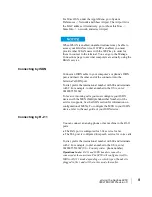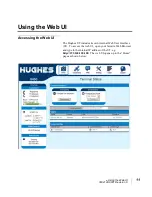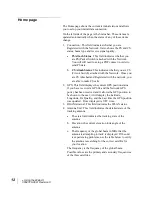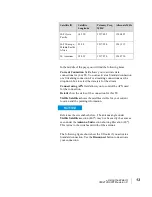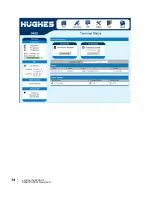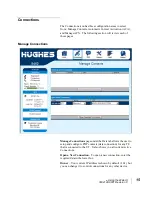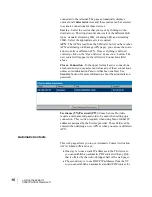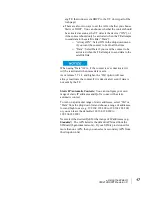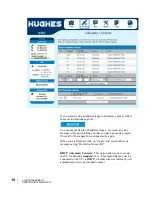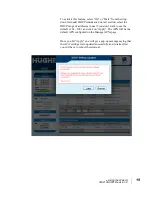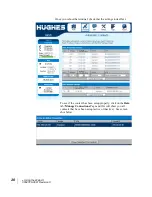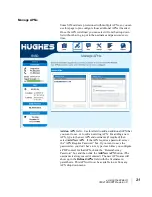
6
Using the Hughes 9450
3004128-0001 Revision C
These default configurations are accessible through LaunchPad
or the web UI and it is recommended to keep these settings for
convenient operation of the Hughes 9450 Land Mobile Terminal.
Power up and the
connection to the
Internet
After power is applied, the Hughes 9450 IDU and Hughes
Tracking Antenna will begin their start-up sequence. The
tracking antenna will begin its search for the BGAN satellite
and the antenna motors may be heard during this time. Note
that the tracking antenna must have line of sight to the BGAN
satellite. Once the antenna has locked onto the BGAN satellite,
it will continue to make minor adjustments to acquire optimum
signal strength. The antenna may be heard ‘twitching’ during
this time. Eventually the antenna will sit at an optimum
position while the vehicle is stationary.
Once the vehicle starts moving, the Hughes Tracking Antenna
will automatically track the satellite signal and keep the
antenna pointed towards the satellite. During short outages
(e.g. while driving under a bridge, etc.) the antenna will remain
in the same position and will pick up the satellite signal
immediately. For longer outages the antenna may need to
repeat the search pattern to reacquire the satellite signal.
Circuit switched and packet switched connections will
typically recover from signal outages of less than 60
seconds. User intervention
will
be required to reactivate
circuit switched connections for outages longer than 60
seconds and
may
be required for packet switched
connections depending upon the actual length of outage.
Packet switched connections like FTP are more robust than
circuit switched connections in the network.

















